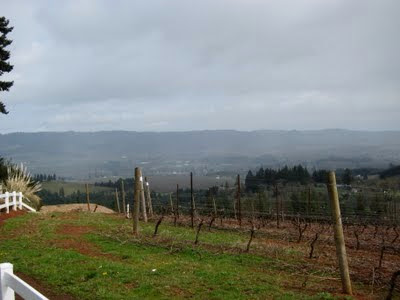Recently I had the opportunity to attend a Chablis Training Seminar produced by the Burgundy Wine Board. The highlights of the seminar were the discussion of Chablis as one of the most iconic white wines in the world and the associated high demand and fraud; the '
climats' of the Grand Cru appellation; and the incredible diversity of vinification styles within Chablis.
Look at this map:
Chablis.
<Climats> of the One-and-Only Grand Cru Appellation
That's right, there is only one Grand Cru appellation in Chablis. So why are there names listed on the bottle after the Grand Cru AOC? Within the vineyard there are seven different '
climats,' separated by elevation, slope and degree of south-facing sun exposure:
Blanchot, Bougros, Les Clos, Grenouilles, Preuses, Valmur, Vaudésir.
The wines we tasted are as follows:
1. Petit Chablis, 2009, La Chablisienne Clean, zippy lemon-lime juice and bitey, green apple tang with very slight vegetal and musty undertones. (Suggested Pairing: cheese puffs)
2. Chablis, 2009, Domaine Daniel DAMPT et Fils Slightly more developed fruit, leaning towards the floral, sweet pear, green apple and vanilla qualities.
3. Chablis, 2009, Domaine des Malandes Sweet, aromatic lemon oil dances upon a seashell minerality with with an essence of delicate, toasty, grilled green asparagus.
4. Chablis 1er Cru, Montmains, 2009, Domaine VOCORET et Fils This wine exhibited some of the vinification styles that are less expected from a Chablis. Definite toast and butter notes with a lemony, stone fruit core. With this wine, the ability to pair with creamy seafood really started to jump up and down. (Suggested pairing: offal/ headcheese and thicker butter sauces)
5. Chablis 1er Cru, Mont de Milieu, 2009, Domaine SIMMONET-FEBVRE Although it has the same structure of the Chablis and Petit Chablis, the fruit really changed on this one. The fruit became much softer and really balanced the acidity. White peaches and floral notes sang on the nose, and dissolved on the palate.
6. Chablis 1er Cru, Vaillons, 2008, Domaine du Chardonnay This was the most interesting wine in the flight. It was pure olive or oyster brine. The fruit was yellow, both apples and pears. The culprit? Bâtonnage. The stirring of the lees left some warm brioche to suck up the sauce.
7. Chablis Grand Cru, Bougros, 2008, William FEVRE This one was corked. I would like to personally re-taste this Grand Cru, and I think I've seen it in the local wineshops. Strong minerality and sweet vanilla notes persisted on the nose.
These were all pre-opened and were approaching room temp. However the final Grand Cru was opened about 20 minutes before we tasted it and really showed some interesting characteristics from bottle aging.
8. Chablis Grand Cru, Grenouilles, 2005, La Chablisienne I was a little overwhelmed with this one. It was definitely was tacked onto the uncommon delights list. Previously, I have predominantly tasted older white wines of the Champagne and Riesling regions. A true Chablis Grand Cru with some age on it morphs into some interesting pantry (or maybe special order) items: lanolin, beeswax and toffee soaking into the juicy bruised pineapple.


























